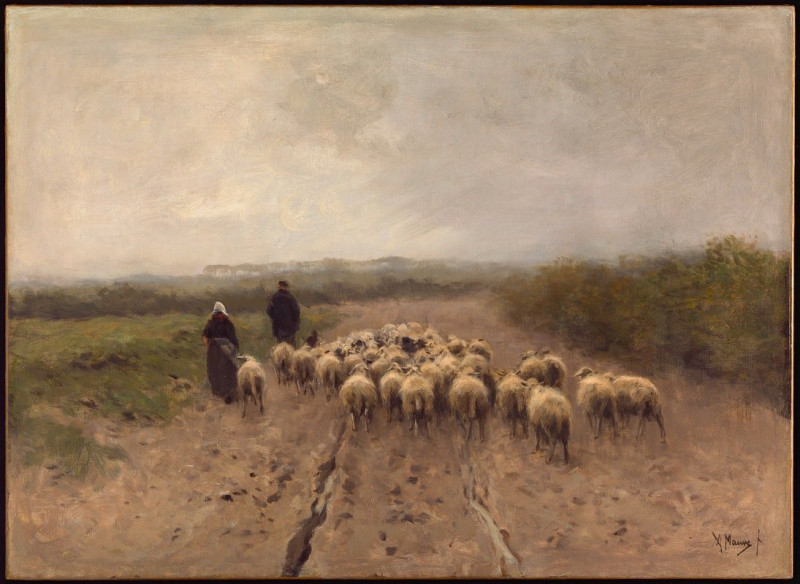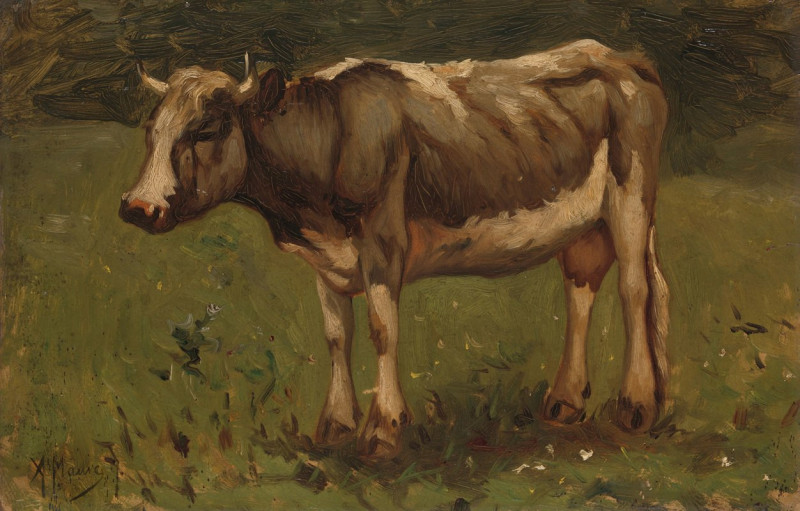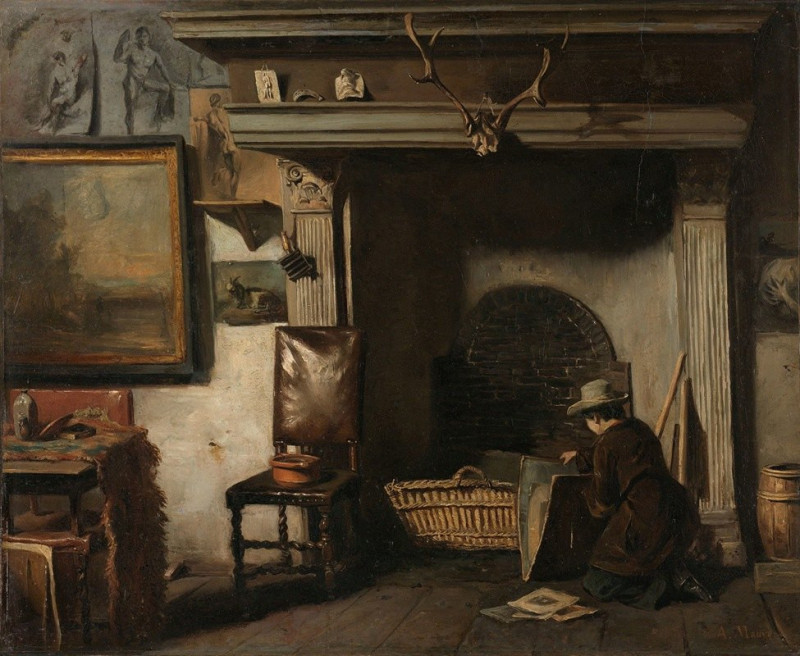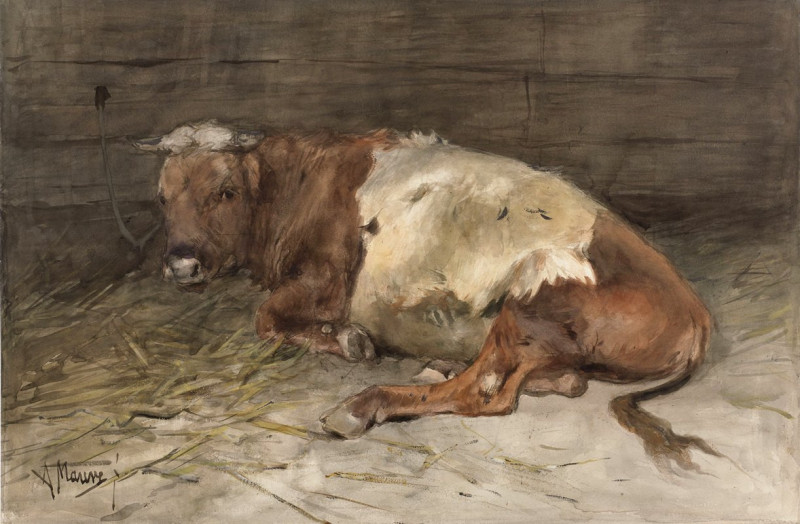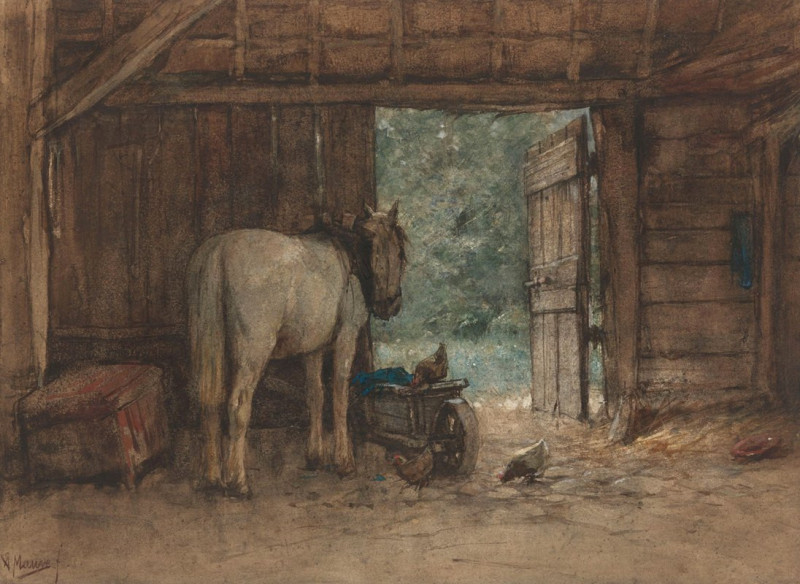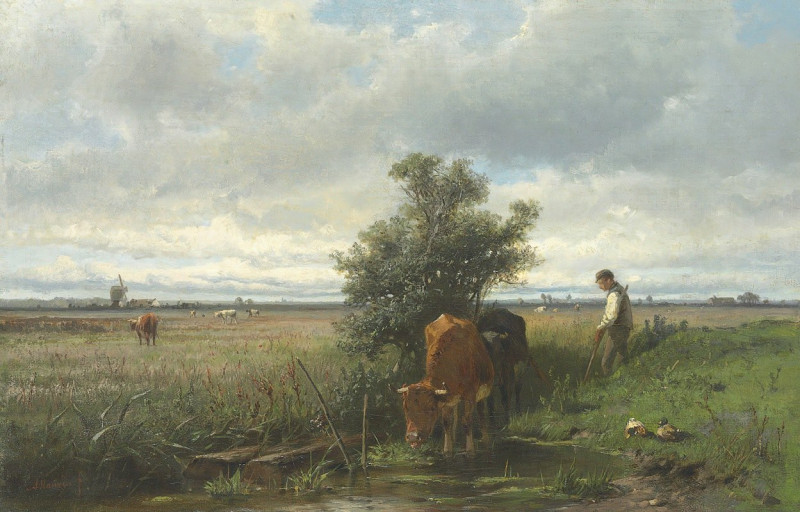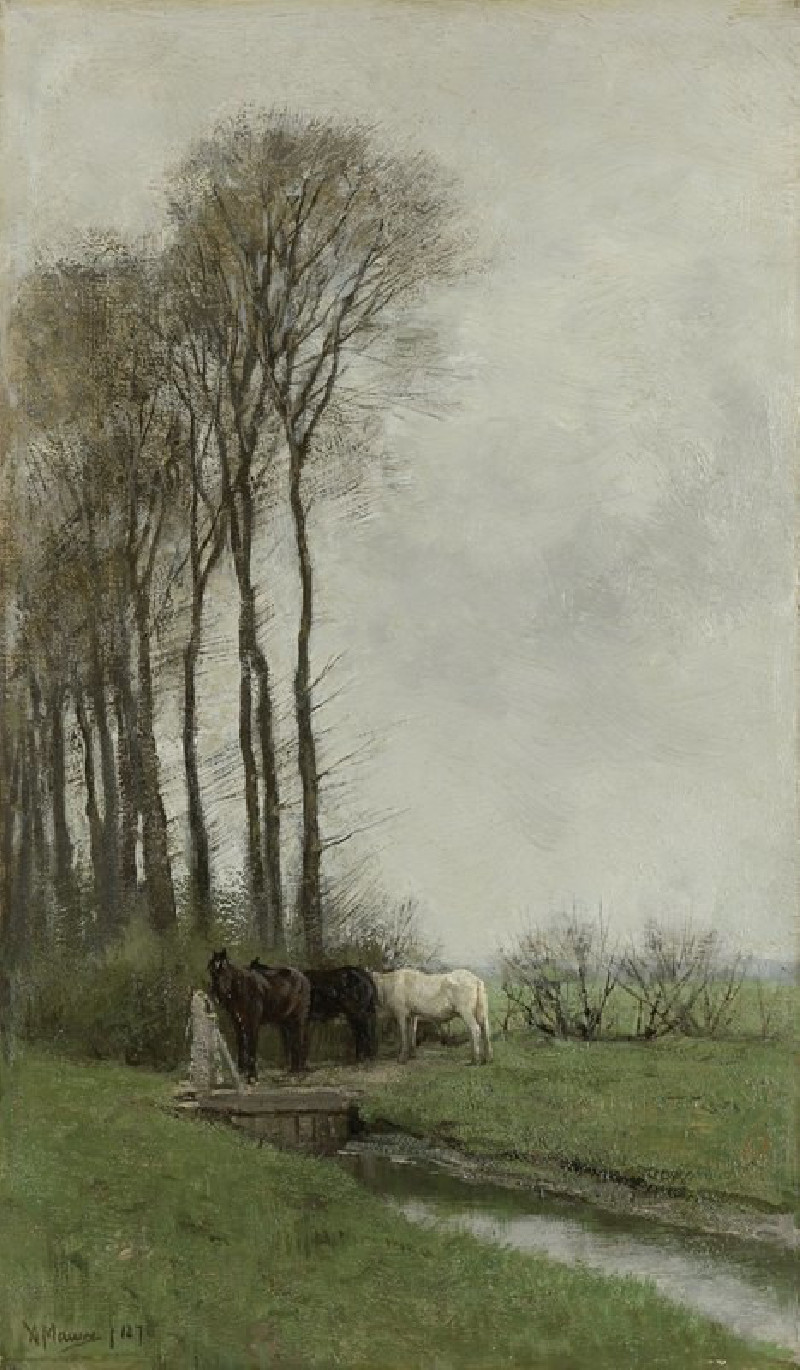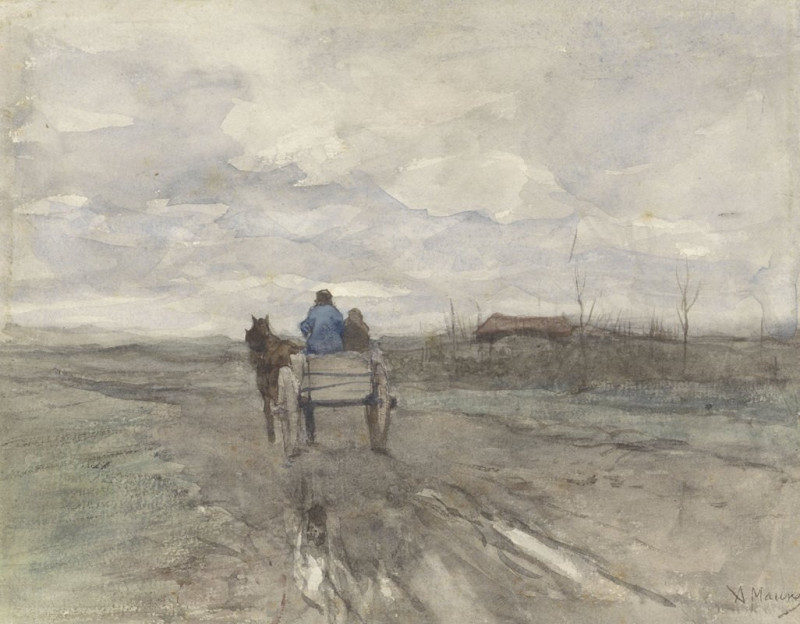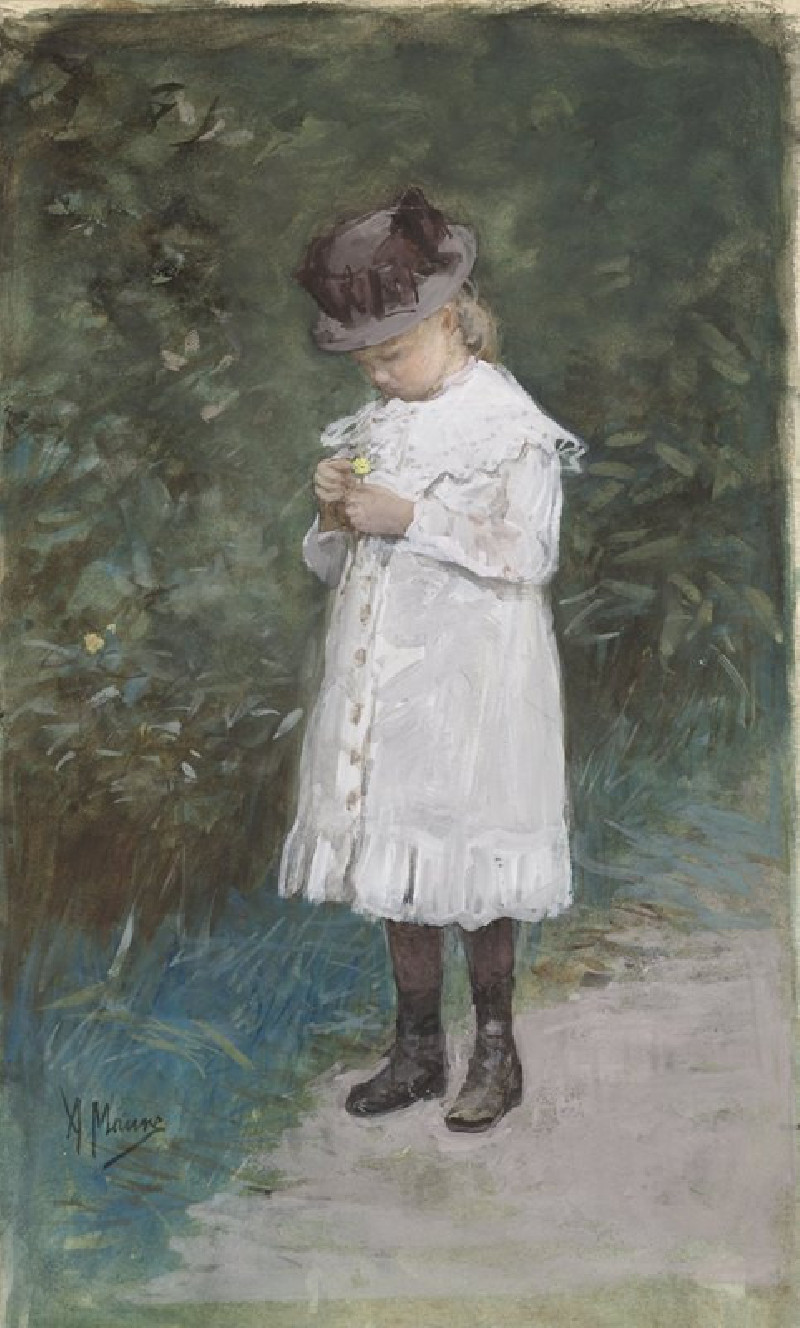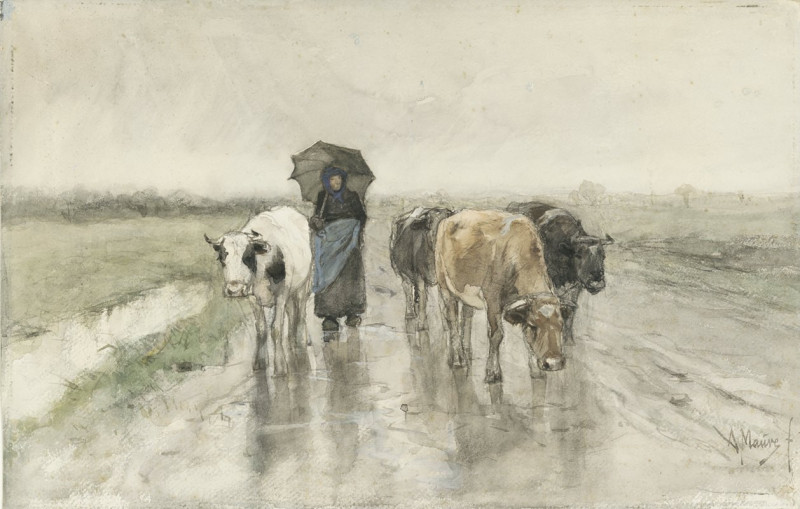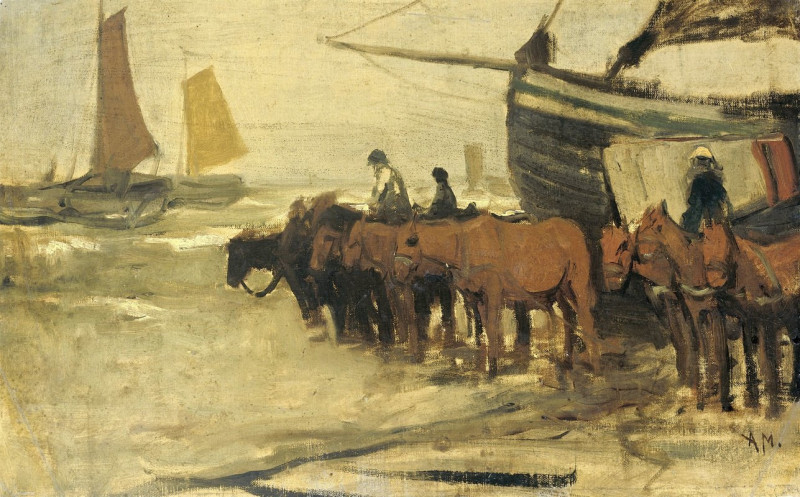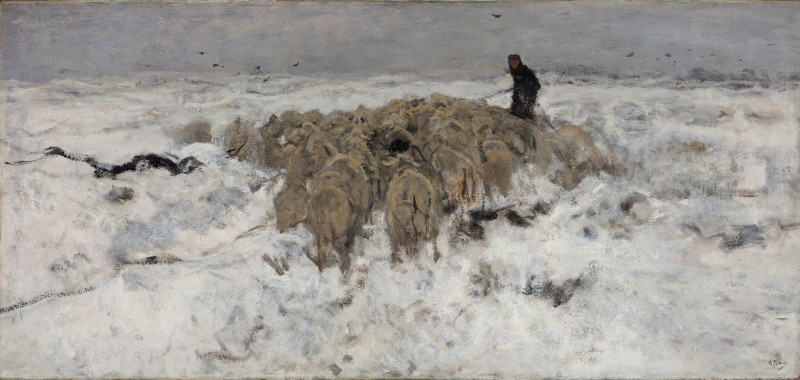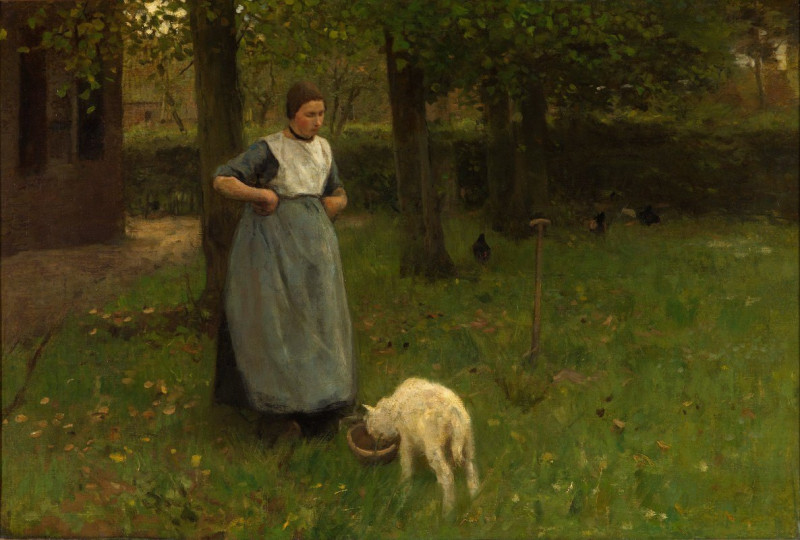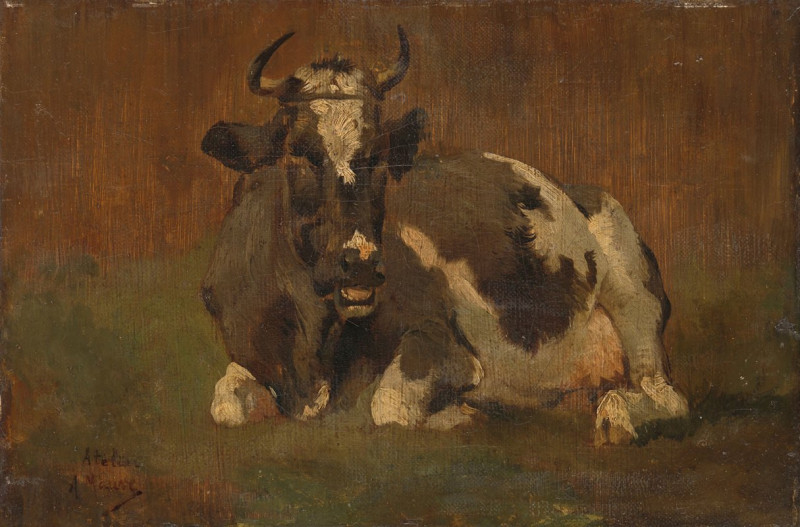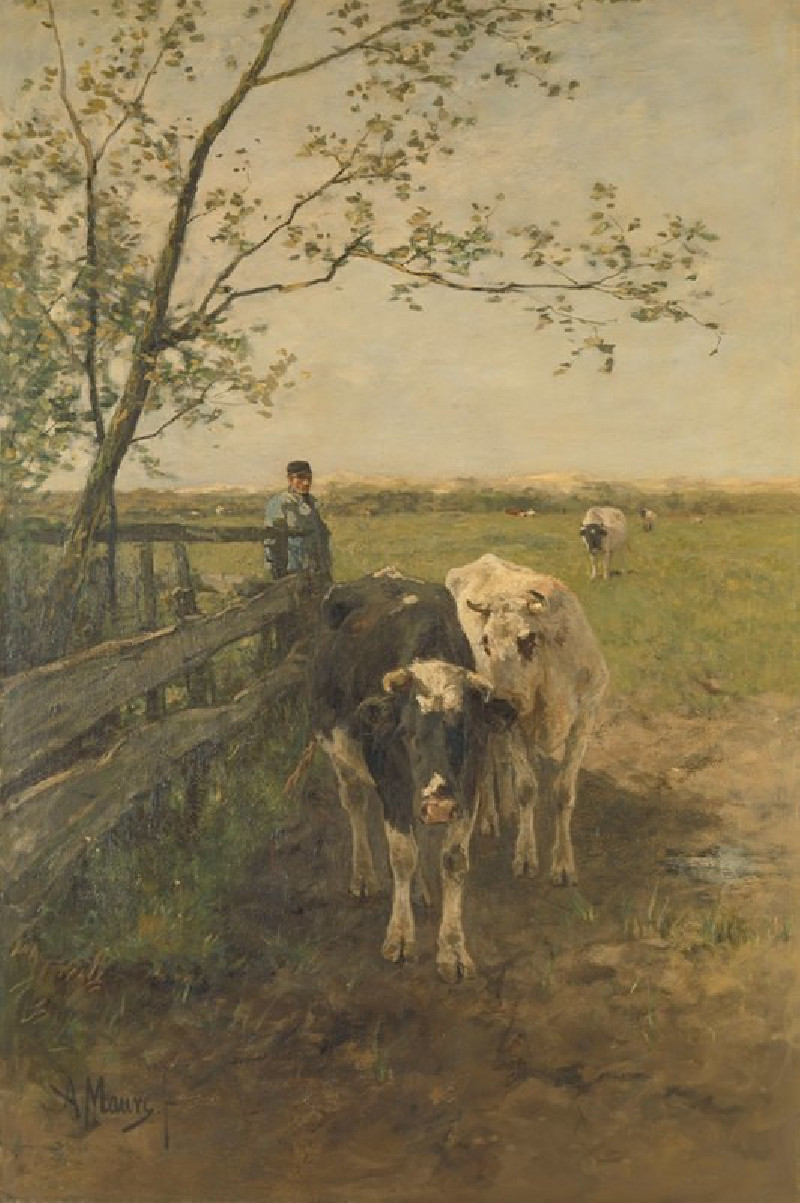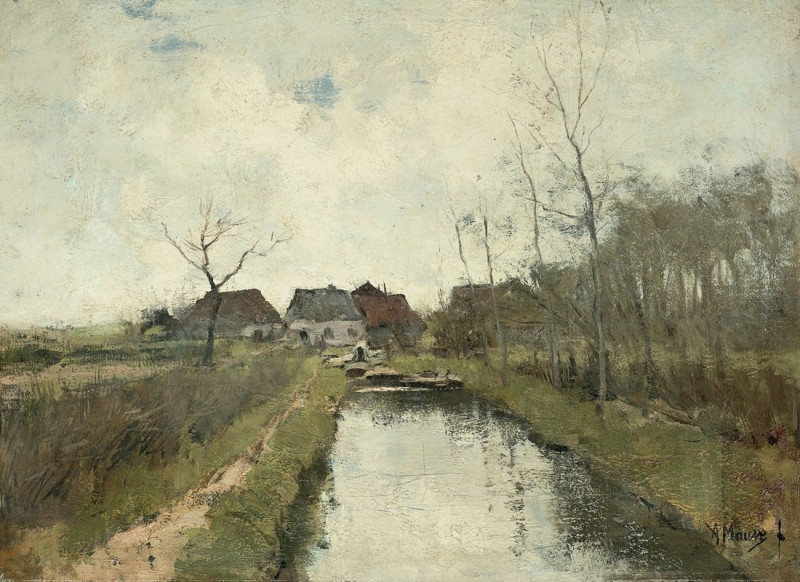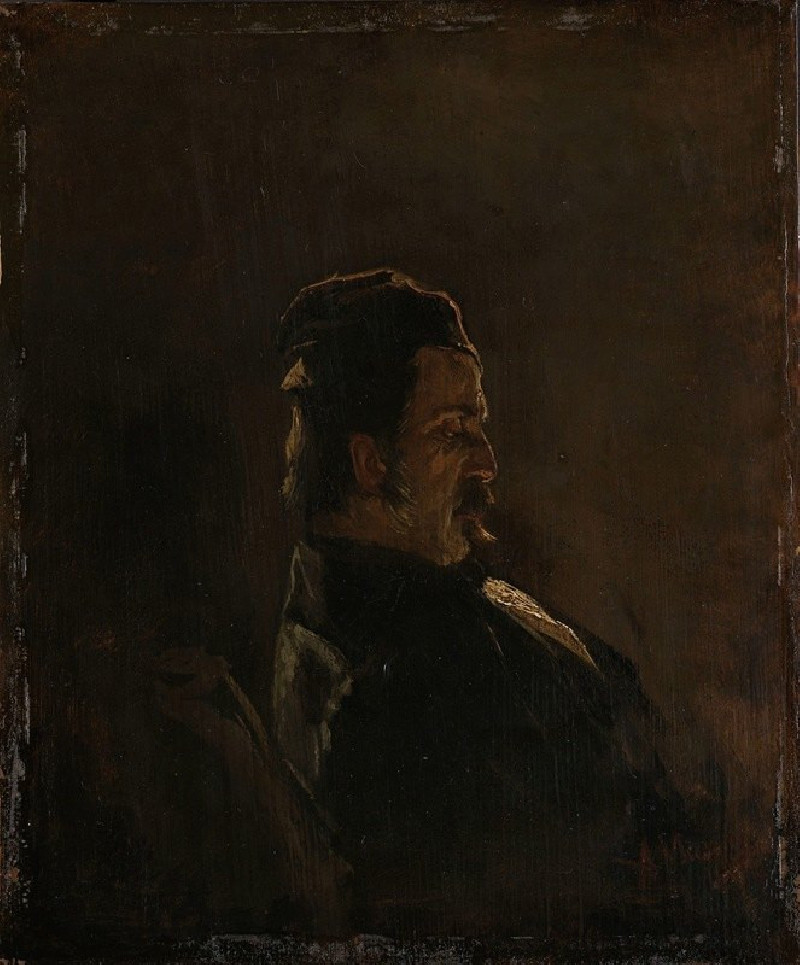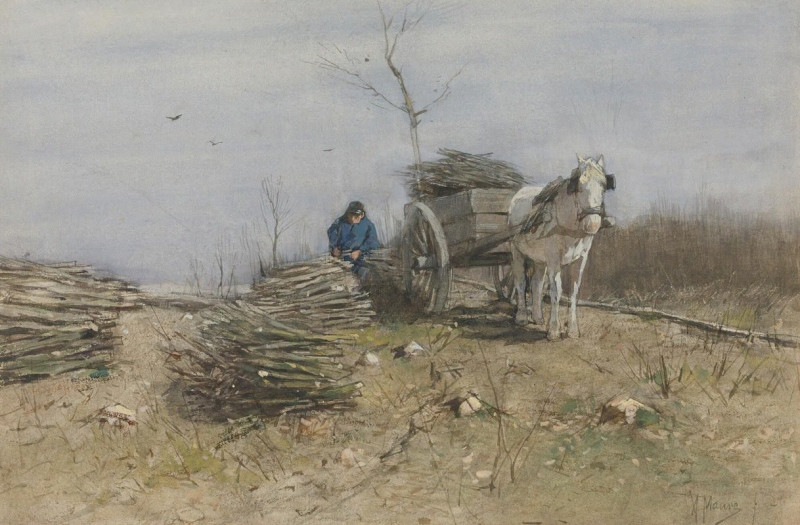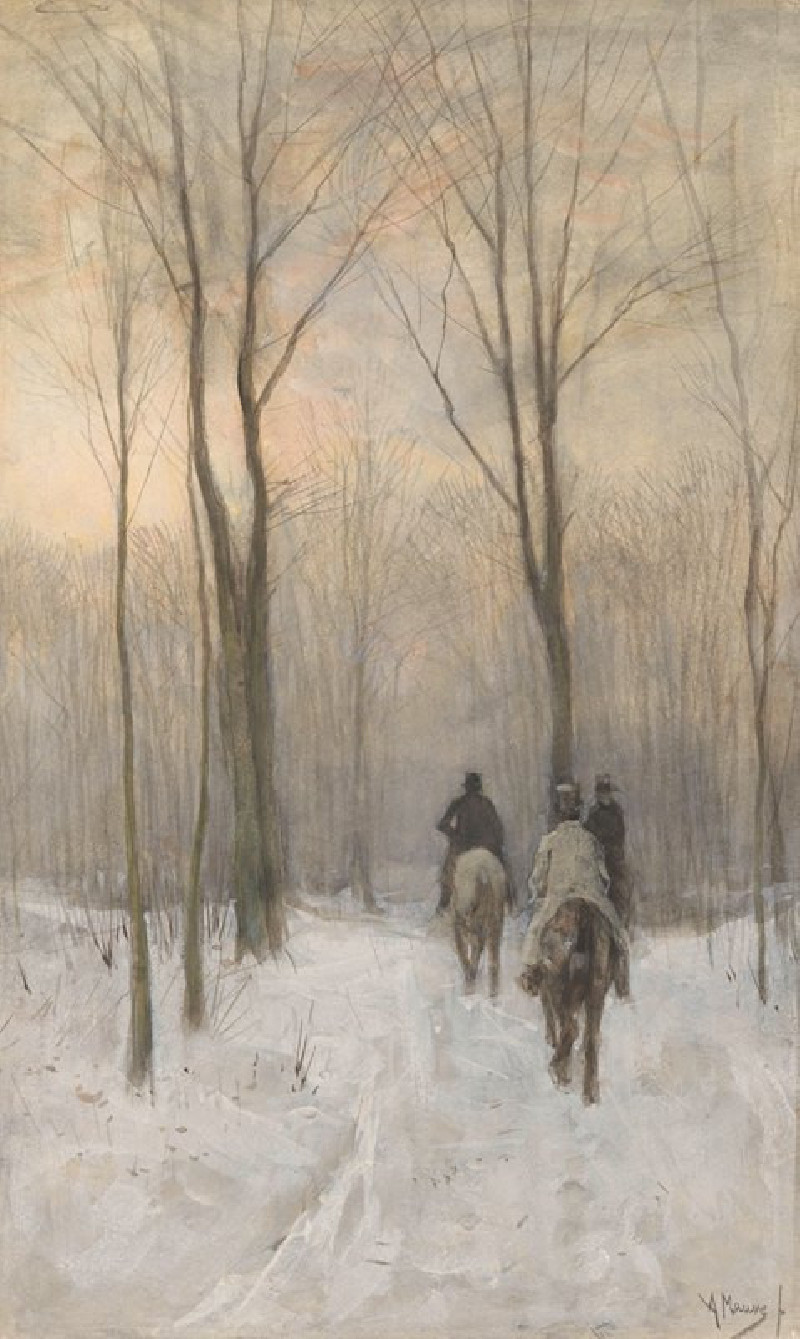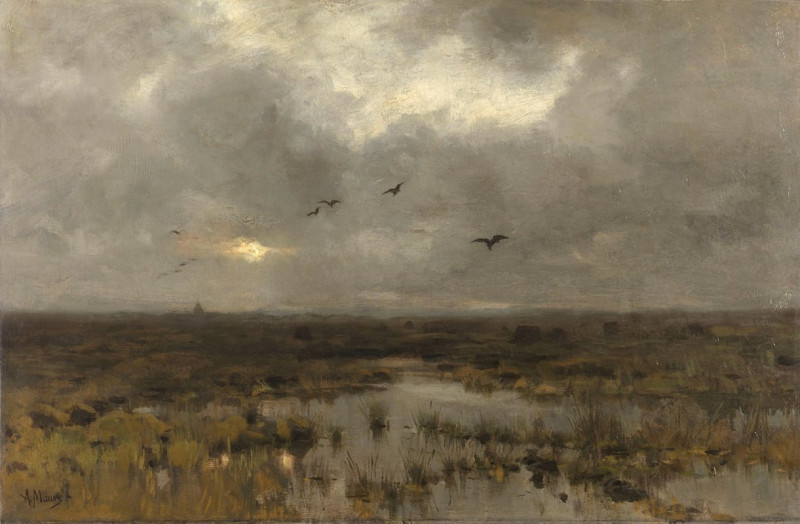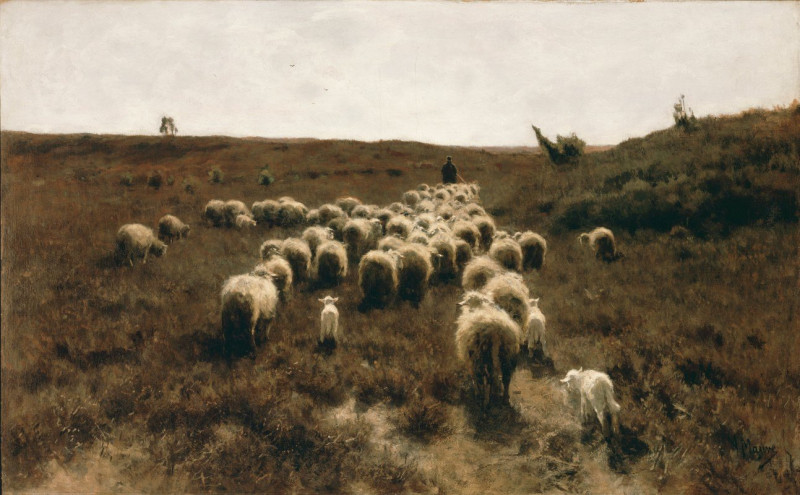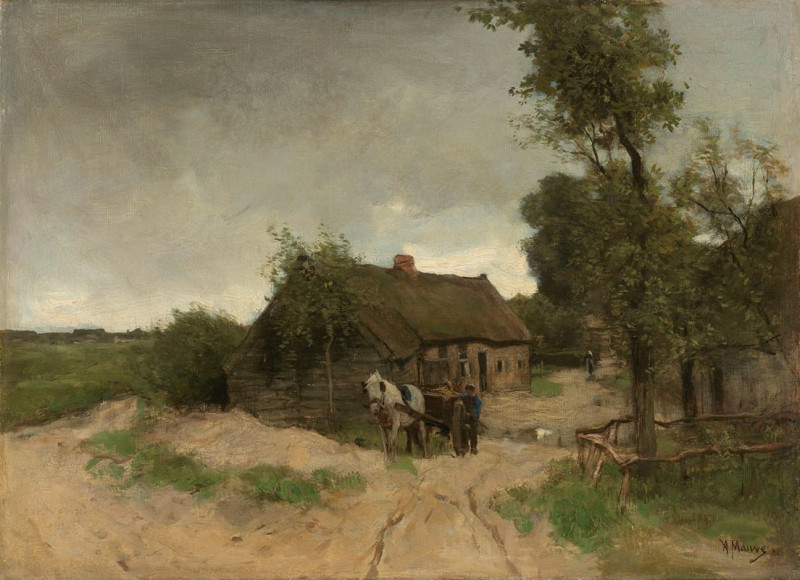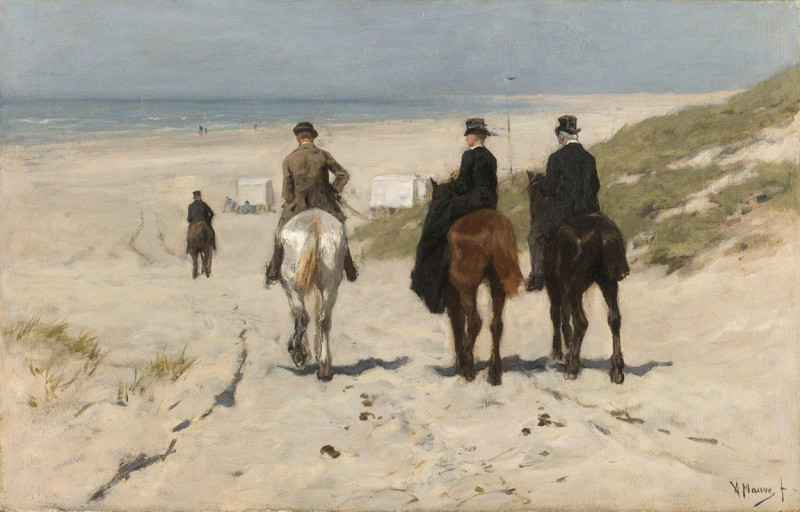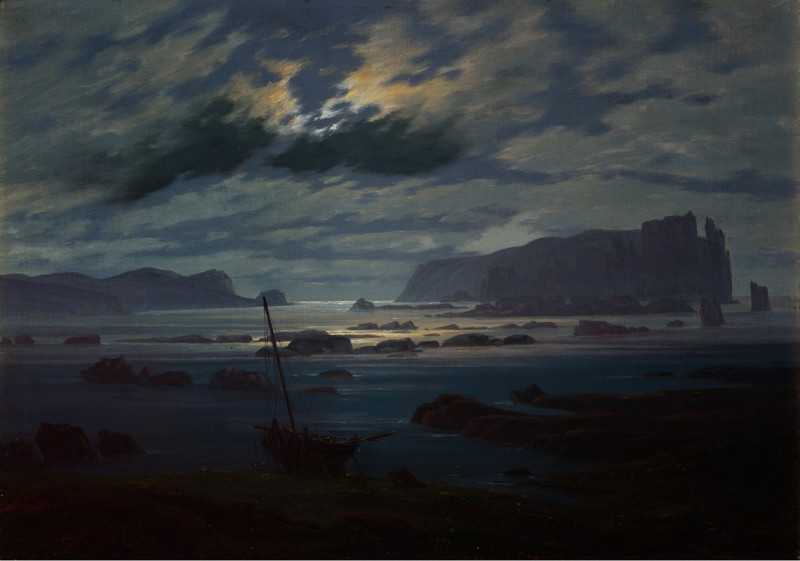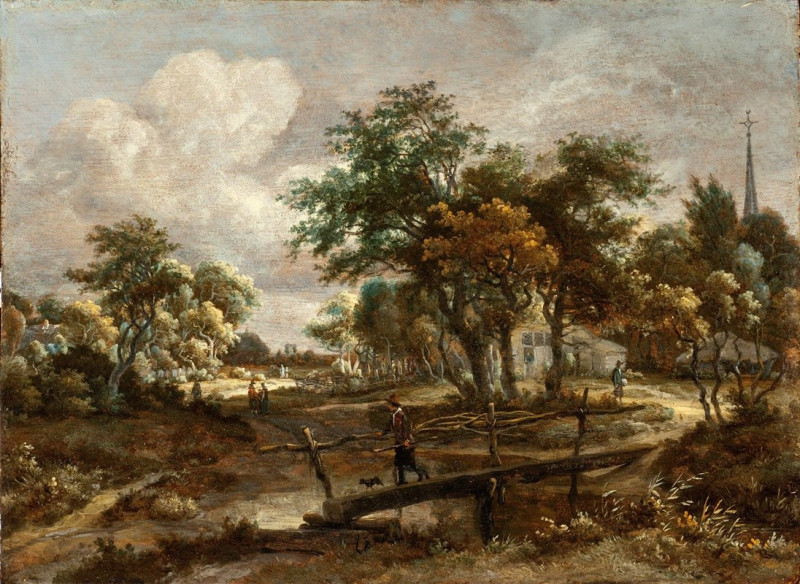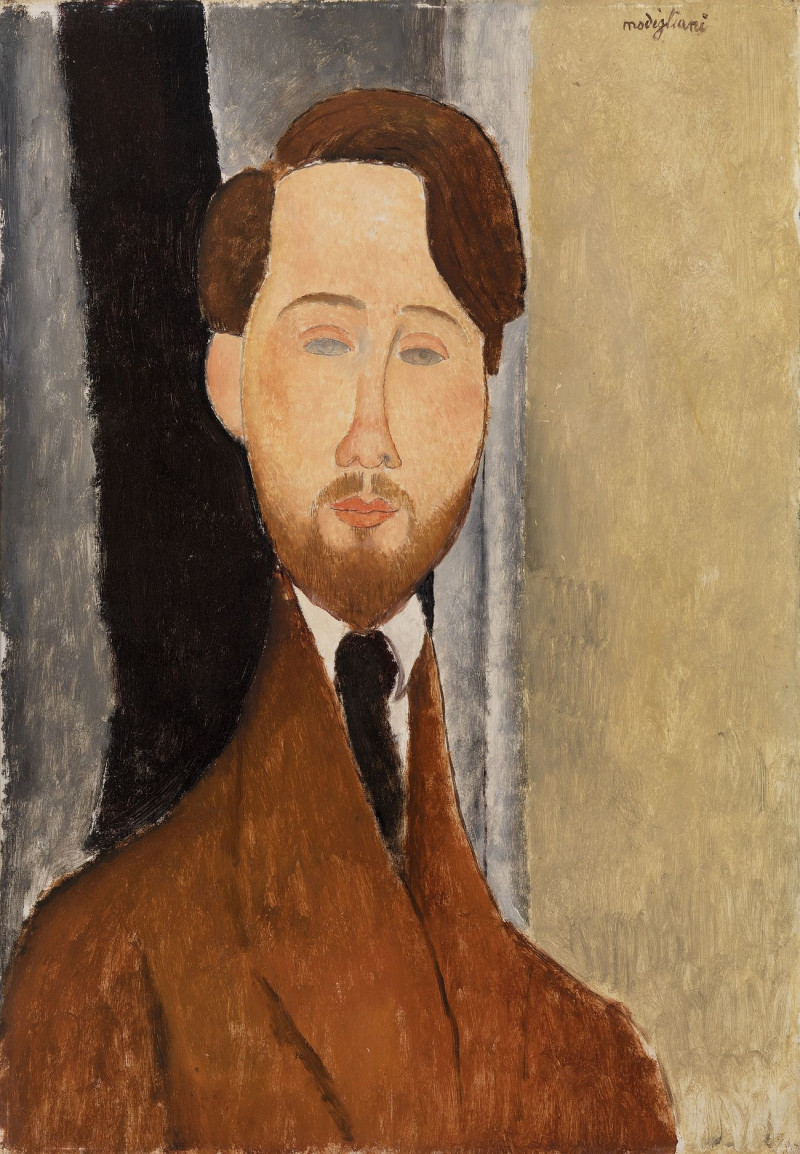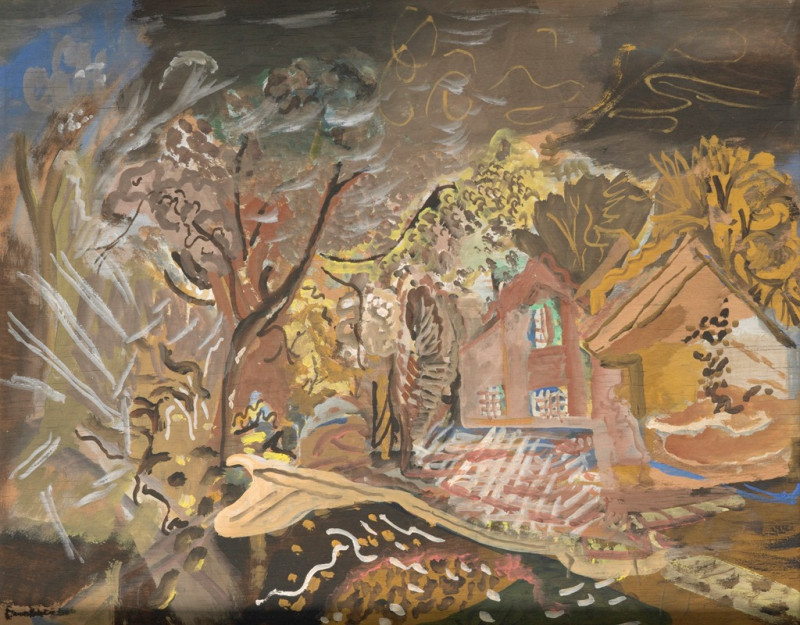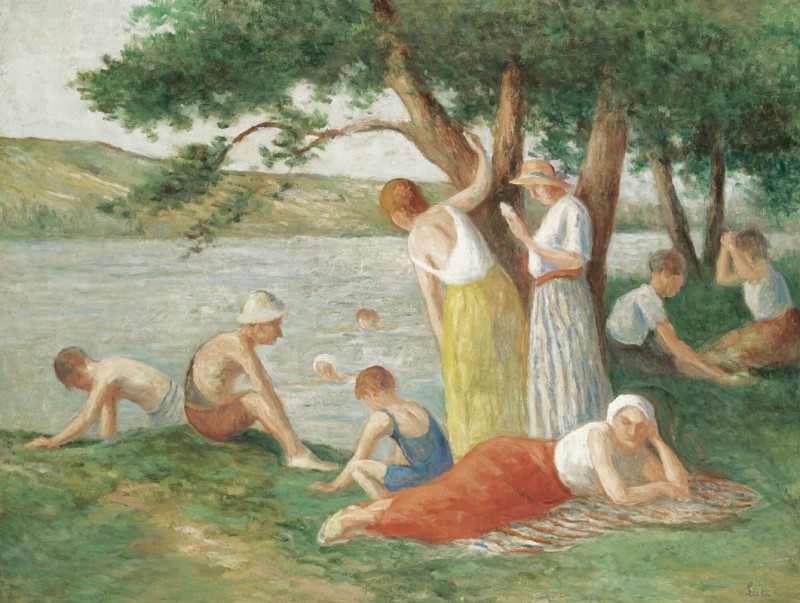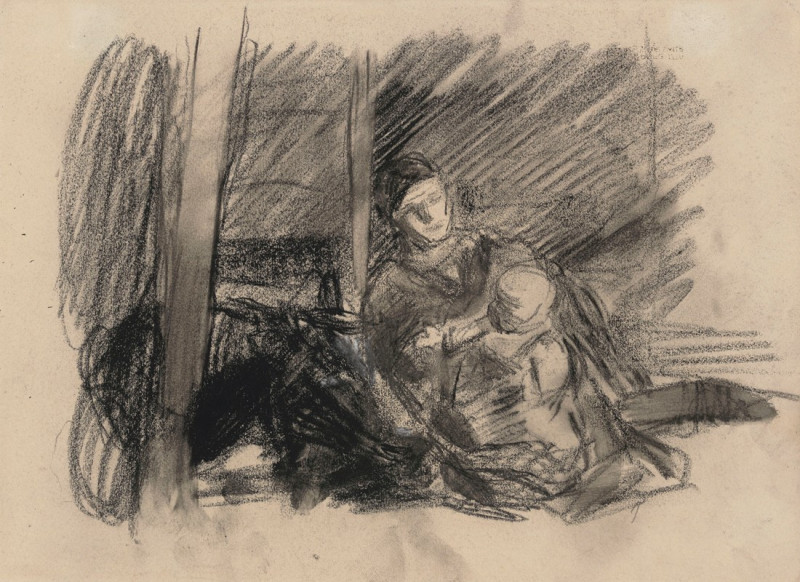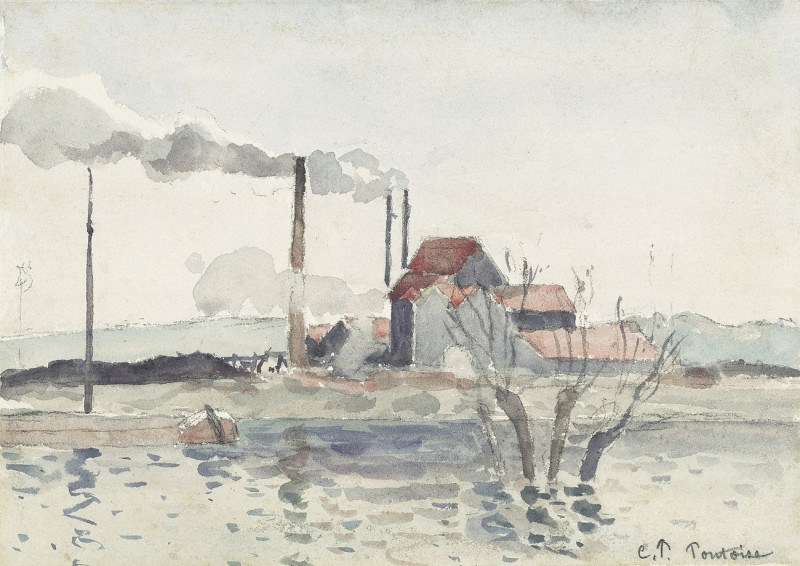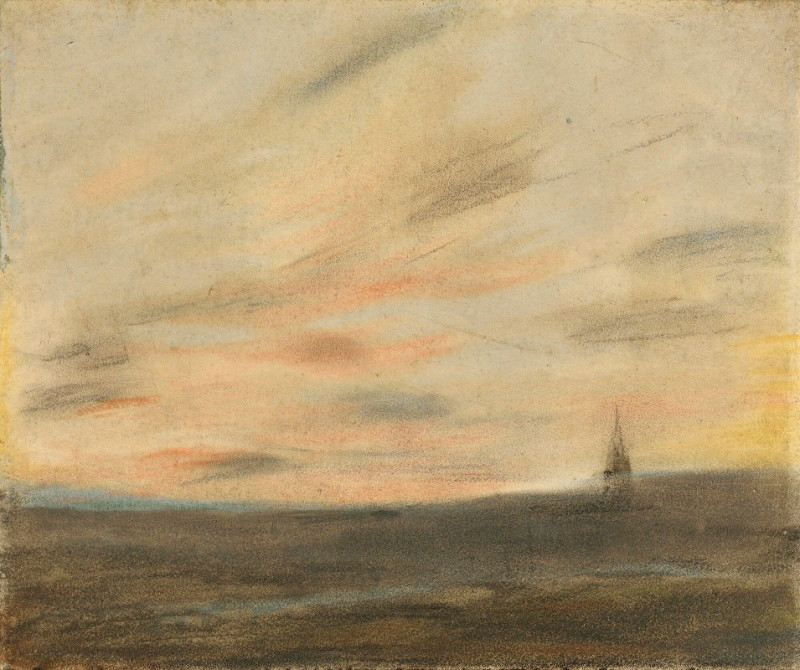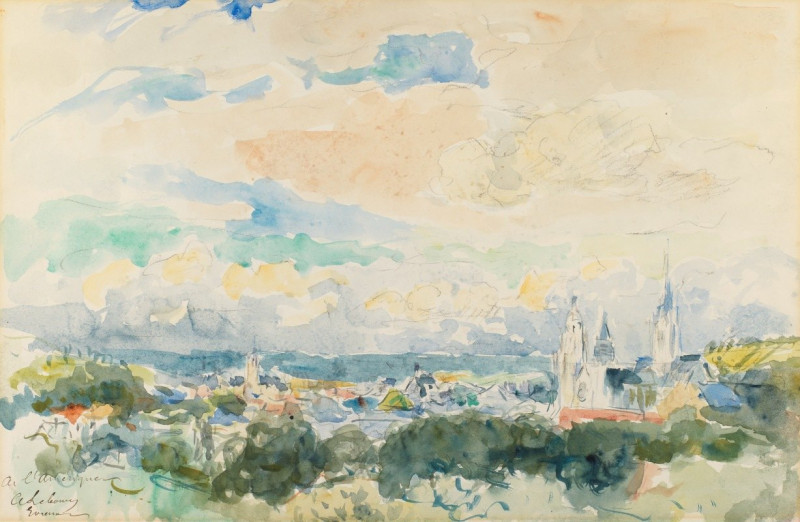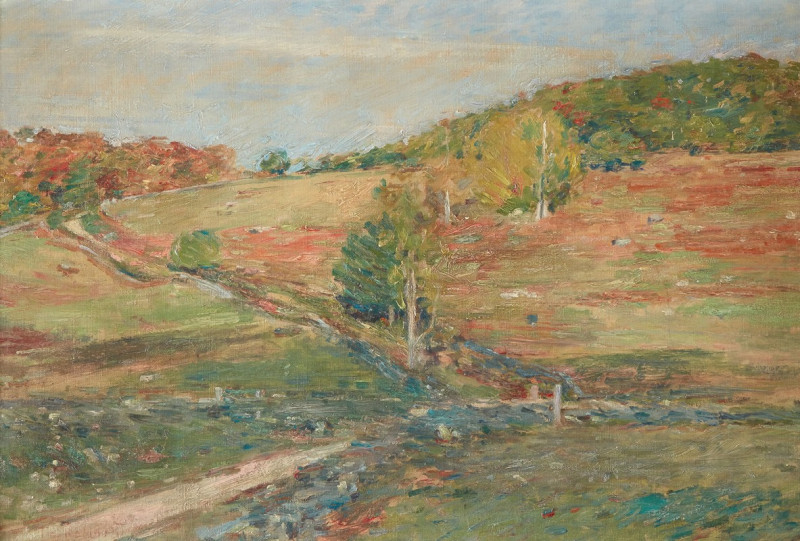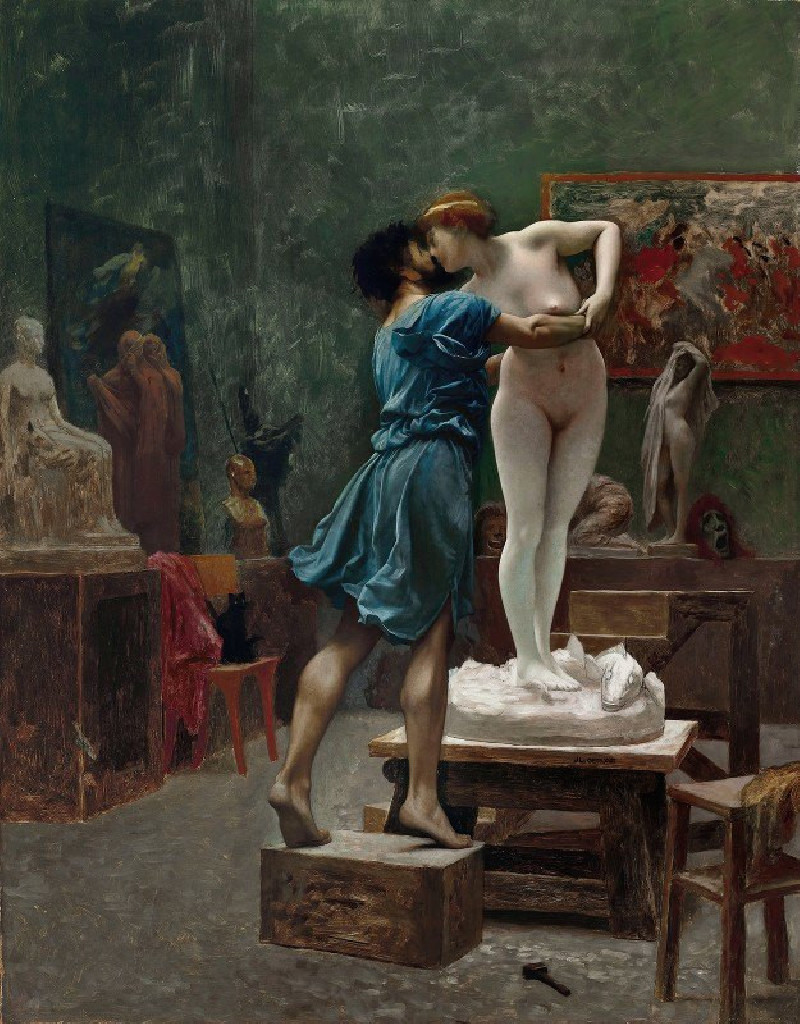Going to Pasture (19th century)
Technique: Giclée quality print
Recommended by our customers
More about this artwork
Anton Mauve's 19th-century painting, "Going to Pasture," captures a serene yet compelling glimpse of rural life. Mauve, a master of the Hague School, is renowned for his ability to depict the simplicity and honesty of the countryside with a subtle grace.The painting immediately draws the viewer into a tranquil scene of sheep being herded along a dusty path. A vast flock of sheep dominates the foreground, their woolly backs contributing textures and a soft, almost tactile quality to the work. The path, marked by the sheep's frequent travels, guides the eye through the canvas.What makes this piece particularly evocative are the two figures accompanying the flock—a man and a woman—each integral to the pastoral narrative. Clad in traditional garb, they exude a sense of quiet diligence and timeless connection to the landscape. Their presence is understated yet pivotal, guiding the sheep under a muted, expansive sky that brilliantly conveys the early hour.Mauve’s use of soft, earthy tones and his attention to the delicate interplay of light and shadow evoke a mood that is contemplative and soothing. There's a harmony here, a beautifully captured moment of daily rural activity that also subtly comments on humanity's relationship with nature."Going to Pasture" is more than just a visual record; it is a profound meditation on tradition, the rhythms of nature, and the unspoken bond between the shepherds and their flock.
Delivery
Returns
Anthonij "Anton" Rudolf Mauve (18 September 1838 – 5 February 1888) was a Dutch realist painter who was a leading member of the Hague School. He signed his paintings 'A. Mauve' or with a monogrammed 'A.M.'. A master colorist, he was a very significant early influence on his cousin-in-law Vincent van Gogh.
His best-known paintings depict peasants working in the fields. His paintings of flocks of sheep were especially popular with American patrons, so popular that a price differential developed between scenes of "sheep coming" and "sheep going".

